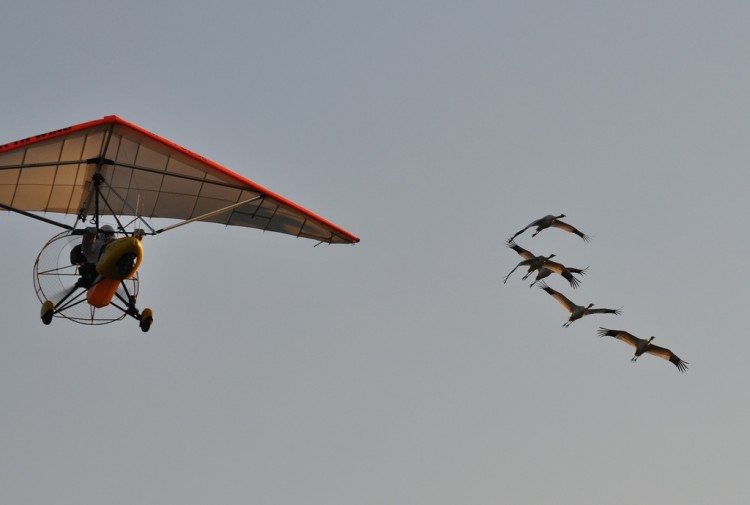Operation Migration and the U. S. Fish and Wildlife Service (FWS) announced that five rare whooping cranes safely made it to Florida on Friday, Nov. 23.
The quintet will spend the winter in the St. Marks National Wildlife Refuge on the Gulf of Mexico. About 900 people arrived before dawn to watch the birds arrive, according to FWS Supervisory Refuge Ranger Robin Will.
“People have an emotional reaction, a sense of hope, of being part of something,” when they see the cranes, said Will in a phone interview.
She said a teacher brought her 3rd grade class from a school in nearby Tallahassee. A TV reporter interviewed one of the students, who spoke unusually well about cranes, while the teacher “was standing there with such pride. It was more than, oh wow, they eat worms!” said Will with a laugh.
Will said grandparents, parents and children came to the landing, and “it was great to see all these different generations. That was very gratifying.” A 23-year old researcher who had helped raise the chicks in Maryland was able to be there because she was visiting her Florida-based parents for Thanksgiving.
“We are excited to be a part of this incredible project to restore a flock of whooping cranes to the eastern United States,” stated Refuge Manager Terry Peacock in a press release. “This year, St. Marks National Wildlife Refuge will be the only Florida refuge to host the young cranes.” A coalition between government and non-profits is working to restore the birds. Operation Migration leads the coalition.
The migration had its sorrow. At first it was six birds, nicknamed the Spectacular Six, but earlier in the trip one of them landed wrong and broke her leg, and died on the operating table. They do not tolerate anesthetic well. “It takes so much energy to bring a chick to maturity,” and it is tough when one dies, said Will.
Will said pilot Brooke Pennypacker reminded the saddened researchers that a natural migration often has a 50 percent mortality rate. “He tried to put it in perspective,” said Will.
A photographer took a picture of the five survivors with the aircraft, in which a crane shadow appears on one wing, as if representing the sixth bird.
They are in seclusion now, waiting to be checked by a veterinarian. The doctor will look for “coughs, breathing trouble, check their legs for any kind of fracture,” before they begin wintering in the coastal refuge, said Will.
These are fresh water cranes, and researchers had to teach them how to manage coastal living, according to Will. The researchers stay silent, conceal themselves in tent-like garments and use a crane puppet to show the juvenile birds how to forage for crabs, for example.
The birds left Wisconsin on Sept. 28, following ultralight aircraft for 1101 miles. When passing over Alabama, they flew at a record altitude of 5,700 feet and 70 miles per hour ground speed, according to the FWS.
Operation Migration relies on contributions from individuals and foundations and on volunteers, according to its statement.
About 600 whooping cranes live in the wild, according to the FWS. They nearly died out. In the 1940s only 10-15 individuals survived. The ancient birds have an eight-foot wingspan and are graceful in flight.
The Epoch Times publishes in 35 countries and in 19 languages. Subscribe to our e-newsletter.







